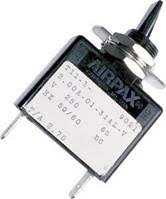
Are you familiar with the mechanics of electrical switches? From computers and TVs to flight instruments and interactive touchscreens, nearly all types of electronics contain switches. These integrated devices are responsible for controlling the flow of electricity. Here are five facts about electrical switches and how they work.
#1) Control Circuits
The primary purpose of electrical switches is to control a circuit. Electronics are powered by electricity. Circuits are conductive pathways that, with the help of a switch, dictate the flow of electricity. A switch can open a circuit, meaning electricity won’t be able to travel through the circuit. And a switch can close a circuit, meaning electricity will be able to travel all the way through the circuit.
#2) Leverage Contacts
While there are different types of electrical switches, most of them leverage contacts. A contact is a piece of conductive material, such as copper or aluminum. Most switches have two contacts. The contacts are connected to an external circuit. When the contacts touch the external circuit, the circuit will be closed. The contacts must be conductive so that electricity, if allowed by the switch, can flow through them. Contacts made of plastic or other nonconductive materials won’t work.
#3) Master Switches Are Available
There are master switches available. Master switches are commonly used in airplanes. They are devices that control many different circuits. Flipping a master switch will essentially interrupt or complete the circuits of multiple interconnected devices. Rather than flipping a traditional switch for each device, users can flip a single master switch.
#4) Multiple Styles
You can find electrical switches in different styles. One of the most common styles is toggle. Toggle switches feature a lever that, as the name suggests, can be toggled. on or off. There are also rocker switches. Rocker switches are characterized by the use of a rocker mechanism that can “rock” back and forth to control a circuit. And there are rotary switches. Rotary switches feature a spindle that rotates to control a circuit.
#5) Switching Capacity
When researching electrical switches, you may come across the term “switching capacity.” It represents the maximum amount of electrical current that a given electrical switch can safely handle. You should consider the switching capacity when choosing an electrical switch. Electrical switches are designed with specific switching capacities. Some electrical switches have a higher switching capacity than others, thereby allowing them to support more electricity.



